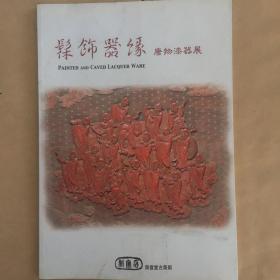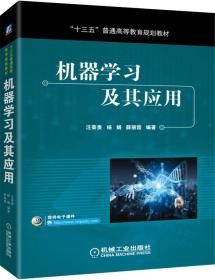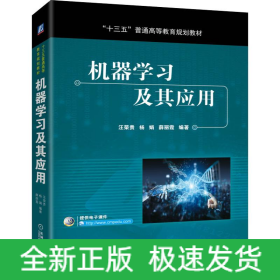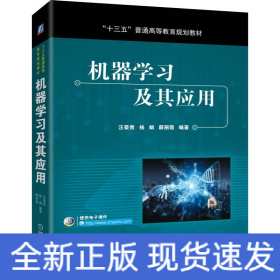
机器学习及其应用(英文版)
¥ 10 八品
仅1件
北京昌平
认证卖家担保交易快速发货售后保障
作者[印]M.Gopal 著
出版社电子工业出版社
出版时间2019-12
版次1
装帧平装
货号72
上书时间2024-09-30
- 店主推荐
- 最新上架
商品详情
- 品相描述:八品
- 书脊断裂
图书标准信息
- 作者 [印]M.Gopal 著
- 出版社 电子工业出版社
- 出版时间 2019-12
- 版次 1
- ISBN 9787121377853
- 定价 129.00元
- 装帧 平装
- 开本 16开
- 纸张 胶版纸
- 页数 644页
- 字数 1.34千字
- 【内容简介】
- 《机器学习及其应用(英文版)》综合探讨了机器学习的理论基础,为读者提供了使用机器学习技术解决现实问题所需的知识。具体内容包括如何概念化问题、准确表示数据、选择和调整算法、解释和分析结果以及做出合理的决策,采用非严格意义的数学进行阐述,涵盖了一系列广泛的机器学习主题,并特别强调了一些有益的方法,如监督学习、统计学习、使用支持向量机(SVM)学习、使用神经网络(NN)学习、模糊推理系统、数据聚类、数据变换、决策树学习、商业智能、数据挖掘,等等。
- 【作者简介】
-
M. Gopal曾任印度理工学院德里分校教授,是一位优秀的作者、教师和研究员,还是一位享誉全球的院士。他是《控制工程》等5本书的作者或合著者,其著作被译为多国语言,在世界范围广泛使用。他在国外知名视频网站(YouTube)上的视频课程是印度理工学院*受欢迎的课程之一。Gopal教授是机器学习领域的知名研究者,著有150多篇研究论文,部分发表在高影响因子的期刊上。他目前的研究兴趣在机器学习和智能控制领域。
M. Gopal曾任印度理工学院德里分校教授,是一位优秀的作者、教师和研究员,还是一位享誉全球的院士。他是Control Engineering等5本书的作者或合著者,其著作被译为多国语言,在世界范围广泛使用。他在YouTube上的视频课程是印度理工学院*受欢迎的课程之一。Gopal教授是机器学习领域的知名研究者,著有150多篇研究论文,部分发表在高影响因子的期刊上。他目前的研究兴趣在机器学习和智能控制领域。 - 【目录】
-
目录
1. Introduction 引言… ………………………………………………………………………………1
1.1 Towards Intelligent Machines 走向智能机器 ………………………………………………1
1.2 Well-Posed Machine Learning Problems 适定的机器学习问题 ……………………………5
1.3 Examples of Applications in Diverse Fields 不同领域的应用实例 …………………………7
1.4 Data Representation 数据表示 ………………………………………………………………12
1.4.1 Time Series Forecasting 时间序列预测 ………………………………………………15
1.4.2 Datasets for Toy (Unreastically Simple) and Realistic Problems
初级问题和现实问题数据集 …………………………………………………………17
1.5 Domain Knowledge for Productive use of Machine Learning
使机器学习有效应用的领域知识 ……………………………………………………………18
1.6 Diversity of Data: Structured/Unstructured 数据多样性:结构化/非结构化 ……………20
1.7 Forms of Learning 学习形式 …………………………………………………………………21
1.7.1 Supervised/Directed Learning 监督/指导学习 ……………………………………21
1.7.2 Unsupervised/Undirected Learning 非监督/无指导学习 …………………………22
1.7.3 Reinforcement Learning 强化学习 …………………………………………………22
1.7.4 Learning Based on Natural Processes: Evolution, Swarming, and Immune Systems
基于自然处理的学习:进化、集群和免疫系统………………………………………23
1.8 Machine Learning and Data Mining 机器学习和数据挖掘 …………………………………25
1.9 Basic Linear Algebra in Machine Learning Techniques
机器学习技术中的基础线性代数 ……………………………………………………………26
1.10 Relevant Resources for Machine Learning 机器学习的相关资源 …………………………34
2. Supervised Learning: Rationale and Basics 监督学习:基本原理和基础… ………………36
2.1 Learning from Observations 从观测中学习 …………………………………………………36
2.2 Bias and Variance 偏差和方差 ………………………………………………………………42
2.3 Why Learning Works: Computational Learning Theory
学习为什么有效:计算学习理论 ……………………………………………………………46
2.4 Occam’s Razor Principle and Overfitting Avoidance
奥卡姆剃刀原理和防止过拟合 ………………………………………………………………49
2.5 Heuristic Search in Inductive Learning 归纳学习中的启发式搜索 …………………………51
2.5.1 Search through Hypothesis Space 假设空间搜索 ……………………………………52
2.5.2 Ensemble Learning 集成学习 ………………………………………………………53
2.5.3 Evaluation of a Learning System 学习系统的评价 …………………………………55
2.6 Estimating Generalization Errors 估计泛化误差 ……………………………………………56
2.6.1 Holdout Method and Random Subsampling 留出法和随机下采样 …………………56
2.6.2 Cross-validation 交叉验证 ……………………………………………………………57
2.6.3 Bootstrapping 自助法 …………………………………………………………………58
2.7 Metrics for Assessing Regression (Numeric Prediction) Accuracy
评价回归(数值预测)精度的指标 …………………………………………………………59
2.7.1 Mean Square Error 均方误差 …………………………………………………………60
2.7.2 Mean Absolute Error 平均绝对误差 …………………………………………………60
2.8 Metrics for Assessing Classification (Pattern Recognition) Accuracy
评价分类(模式识别)精度的指标 …………………………………………………………61
2.8.1 Misclassification Error 误分类误差 …………………………………………………61
2.8.2 Confusion Matrix 混淆矩阵 …………………………………………………………62
2.8.3 Comparing Classifiers Based on ROC Curves 基于ROC曲线的分类器比较 ……66
2.9 An Overview of the Design Cycle and Issues in Machine Learning
机器学习中的设计周期和问题概述 …………………………………………………………68
3. Statistical Learning 统计学习… …………………………………………………………………73
3.1 Machine Learning and Inferential Statistical Analysis 机器学习与推断统计分析 …………73
3.2 Descriptive Statistics in Learning Techniques 学习技术中的描述统计学 …………………74
3.2.1 Representing Uncertainties in Data: Probability Distributions
表示数据中的不确定性:概率分布 …………………………………………………75
3.2.2 Descriptive Measures of Probability Distributions 概率分布的描述方法 …………80
3.2.3 Descriptive Measures from Data Sample 数据样本的描述方法 ……………………83
3.2.4 Normal Distributions 正态分布 ………………………………………………………84
3.2.5 Data Similarity 数据相似性 …………………………………………………………85
3.3 Bayesian Reasoning: A Probabilistic Approach to Inference
贝叶斯推理:推断的概率方法 ………………………………………………………………87
3.3.1 Bayes Theorem 贝叶斯定理 …………………………………………………………88
3.3.2 Naive Bayes Classifier 朴素贝叶斯分类器 …………………………………………93
3.3.3 Bayesian Belief Networks 贝叶斯信念网络 …………………………………………98
3.4 k-Nearest Neighbor (k-NN) Classifier k近邻(k-NN)分类器 …………………………102
3.5 Discriminant Functions and Regression Functions 判别函数和回归函数 ………………106
3.5.1 Classification and Discriminant Functions 分类和判别函数 ……………………107
3.5.2 Numeric Prediction and Regression Functions 数值预测和回归函数 ……………108
3.5.3 Practical Hypothesis Functions 实践应用中的假设函数 …………………………109
3.6 Linear Regression with Least Square Error Criterion
基于最小二乘误差准则的线性回归法 ……………………………………………………112
3.6.1 Minimal Sum-of-Error-Squares and the Pseudoinverse 最小误差平方和与伪逆 113
3.6.2 Gradient Descent Optimization Schemes 梯度下降法优化方案 …………………115
3.6.3 Least Mean Square (LMS) Algorithm 最小均方(LMS)算法 …………………115
3.7 Logistic Regression for Classification Tasks 分类任务的逻辑回归法 ……………………116
3.8 Fisher’s Linear Discriminant and Thresholding for Classification
Fisher线性判别和分类阈值…………………………………………………………………120
3.8.1 Fisher’s Linear Discriminant Fisher线性判别式 …………………………………120
3.8.2 Thresholding 阈值 …………………………………………………………………125
3.9 Minimum Description Length Principle 最小描述长度原理 ……………………………126
3.9.1 Bayesian Perspective 贝叶斯角度 …………………………………………………127
3.9.2 Entropy and Information 熵和信息 ………………………………………………128
4. Learning With Support Vector Machines (SVM) 利用支持向量机(SVM)学习…………130
4.1 Introduction 简介 …………………………………………………………………………130
4.2 Linear Discriminant Functions for Binary Classification
二元分类的线性判别函数 …………………………………………………………………132
4.3 Perceptron Algorithm 感知机算法 …………………………………………………………136
4.4 Linear Maximal Margin Classifier for Linearly Separable Data
线性可分数据的最大边缘线性分类器 ……………………………………………………141
4.5 Linear Soft Margin Classifier for Overlapping Classes
重叠类的软边缘线性分类器 ………………………………………………………………152
4.6 Kernel-Induced Feature Spaces 核函数引导的特征空间 …………………………………158
4.7 Nonlinear Classifier 非线性分类器 ………………………………………………………162
4.8 Regression by Support Vector Machines 支持向量机回归 ………………………………167
4.8.1 Linear Regression 线性回归 ………………………………………………………169
4.8.2 Nonlinear Regression 非线性回归 …………………………………………………172
4.9 Decomposing Multiclass Classification Problem Into Binary Classification Tasks
将多类分类问题分解为二元分类任务 ……………………………………………………174
4.9.1 One-Against-All (OAA) 一对所有(OAA) ……………………………………175
4.9.2 One-Against-One (OAO) 一对一(OAO) ………………………………………176
4.10 Variants of Basic SVM Techniques 基础支持向量机技术的变体 ………………………177
5. Learning With Neural Networks (NN) 利用神经网络(NN)学习…………………………181
5.1 Towards Cognitive Machine 走向认知机器 ………………………………………………181
5.1.1 From Perceptrons to Deep Networks 从感知机到深度网络 ………………………182
5.2 Neuron Models 神经元模型 ………………………………………………………………184
5.2.1 Biological Neuron 生物神经元 ……………………………………………………184
5.2.2 Artificial Neuron 人工神经元 ……………………………………………………186
5.2.3 Mathmatical Model 数学模型 ……………………………………………………190
5.3 Network Architectures 网络架构 …………………………………………………………193
5.3.1 Feedforward Networks 前馈网络 …………………………………………………194
5.3.2 Recurrent Networks 循环网络 ……………………………………………………199
5.4 Perceptrons 感知机 …………………………………………………………………………200
5.4.1 Limitations of Perceptron Algorithm for Linear Classification Tasks
线性分类任务采用感知机算法的局限性 …………………………………………201
5.4.2 Linear Classification using Regression Techniques
使用回归技术的线性分类 …………………………………………………………201
5.4.3 Standard Gradient Descent Optimization Scheme: Steepest Descent
标准梯度下降法优化方案:最速下降法 …………………………………………203
5.5 Linear Neuron and the Widrow-Hoff Learning Rule
线性神经元与Widrow-Hoff学习规则 ……………………………………………………206
5.5.1 Stochastic Gradient Descent 随机梯度下降法 ……………………………………207
5.6 The Error-Correction Delta Rule 纠错Delta法则 …………………………………………208
5.6.1 Sigmoid Unit: Soft-Limiting Perceptron Sigmoid单元:软限制感知机 …………211
5.7 Multi-Layer Perceptron (MLP) Networks and the Error-Backpropagation Algorithm
多层感知机网络及误差反向传播算法 ……………………………………………………213
5.7.1 The Generalized Delta Rule 广义Delta法则 ……………………………………216
5.7.2 Convergence and Local Minima 收敛性和局部极小值 …………………………226
5.7.3 Adding Momentum to Gradient Descent 为梯度下降法加入动量 ………………227
5.7.4 Heuristic Aspects of the Error-backpropagation Algorithm
误差反向传播算法的启发性 ………………………………………………………228
5.8 Multi-Class Discrimination with MLP Networks 使用MLP网络的多类判别 …………232
5.9 Radial Basis Functions (RBF) Networks 径向基函数(RBF)网络 ……………………235
5.9.1 Training the RBF Network 训练RBF网络 ………………………………………239
5.10 Genetic-Neural Systems 遗传-神经系统 …………………………………………………241
6. Fuzzy Inference Systems 模糊推理系统… ……………………………………………………245
6.1 Introduction 简介 …………………………………………………………………………245
6.2 Cognitive Uncertainty and Fuzzy Rule-Base 认知不确定性和模糊规则库 ………………248
6.3 Fuzzy Quantification of Knowledge 知识的模糊量化 ……………………………………253
6.3.1 Fuzzy Logic 模糊逻辑 ……………………………………………………………253
6.3.2 Fuzzy Sets 模糊集 …………………………………………………………………257
6.3.3 Fuzzy Set Operations 模糊集运算 …………………………………………………267
6.3.4 Fuzzy Relations 模糊关系 …………………………………………………………268
6.4 Fuzzy Rule-Base and Approximate Reasoning 模糊规则库与近似推理 …………………277
6.4.1 Quantification of Rules via Fuzzy Relations 通过模糊关系量化规则 ……………281
6.4.2 Fuzzification of Input 输入的模糊化 ………………………………………………283
6.4.3 Inference Mechanism 推理机制 ……………………………………………………284
6.4.4 Defuzzification of Inferred Fuzzy Set 推理模糊集的解模糊 ……………………298
6.5 Mamdani Model for Fuzzy Inference Systems 模糊推理系统的Mamdani模型 …………301
6.5.1 Mobile Robot Navigation Among Moving Obstacles
移动障碍物环境下的移动机器人导航 ……………………………………………303
6.5.2 Mortgage Loan Assessment 抵押贷款评估 ………………………………………308
6.6 Takagi-Sugeno Fuzzy Model Takagi-Sugeno模糊模型 …………………………………311
6.7 Neuro-Fuzzy Inference Systems 神经模糊推理系统 ……………………………………317
6.7.1 ANFIS Architecture ANFIS结构 …………………………………………………318
6.7.2 How Does an ANFIS Learn? ANFIS如何学习 ……………………………………320
6.8 Gentic-Fuzzy Systems 遗传模糊系统 ……………………………………………………324
7. Data Clustering and Data Transformations 数据聚类和数据变换… ………………………328
7.1 Unsupervised Learning 非监督学习 ………………………………………………………328
7.1.1 Clustering 聚类 ……………………………………………………………………329
7.2 Engineering the Data 数据工程 ……………………………………………………………331
7.2.1 Exploratory Data Analysis: Learning about What is in the Data
探索数据分析:了解数据中的内容 ………………………………………………333
7.2.2 Cluster Analysis: Finding Similarities in the Data
聚类分析:发现数据间的相似性 …………………………………………………334
7.2.3 Data Transformations: Enhancing the Information Content of the Data
数据变换:提高数据的信息量 ……………………………………………………339
7.3 Overview of Basic Clustering Methods 基本聚类方法概述 ………………………………341
7.3.1 Partitional Clustering 划分聚类 ……………………………………………………341
7.3.2 Hierarchical Clustering 层次聚类 …………………………………………………344
7.3.3 Spectral Clustering 谱聚类 …………………………………………………………345
7.3.4 Clustering using Self-Organizing Maps 自组织映射聚类 ………………………349
7.4 K-Means Clustering K均值聚类 …………………………………………………………352
7.5 Fuzzy K-Means Clustering 模糊K均值聚类 ……………………………………………356
7.6 Expectation-Maximization (EM) Algorithm and Gaussian Mixtures Clustering
期望最大化(EM)算法和高斯混合聚类 …………………………………………………362
7.6.1 EM Algorithm EM算法 ……………………………………………………………362
7.6.2 Gaussian Mixture Models 高斯混合模型 …………………………………………365
7.7 Some Useful Data Transformations 一些有用的数据变换 ………………………………372
7.7.1 Data Cleansing 数据清洗 …………………………………………………………372
7.7.2 Derived Attributes 衍生属性 ………………………………………………………374
7.7.3 Discretizing Numeric Attributes 离散化数值属性 ………………………………375
7.7.4 Attribute Reduction Techniques 属性约简技术 ……………………………………377
7.8 Entropy-Based Method for Attribute Discretization 基于熵的属性离散化方法 …………377
7.9 Principal Components Analysis (PCA) for Attribute Reduction
用于属性约简的主成分分析(PCA) ……………………………………………………382
7.10 Rough Sets-Based Methods for Attribute Reduction 基于粗糙集的属性约简方法 ……390
7.10.1 Rough Set Preliminaries 粗糙集准备 ……………………………………………392
7.10.2 Analysis of Relevance of Attributes 属性相关性分析 ……………………………397
7.10.3 Reduction of Attributes 约简属性 …………………………………………………399
8. Decision Tree Learning 决策树学习……………………………………………………………404
8.1 Introduction 简介 …………………………………………………………………………404
8.2 Example of a Classification Decision Tree 分类决策树示例 ……………………………406
8.3 Measures of Impurity for Evaluating Splits in Decision Trees
评价决策树分裂的不纯度度量 ……………………………………………………………411
8.3.1 Information Gain/Entropy reduction 信息增益/熵减少 …………………………411
8.3.2 Gain Ratio 增益率 …………………………………………………………………416
8.3.3 Gini Index 基尼指数 ………………………………………………………………417
8.4 ID3, C4.5, and CART Decision Trees ID3, C4.5与CART决策树 ………………………418
8.5 Pruning the Tree 剪枝 ………………………………………………………………………427
8.6 Strengths and Weaknesses of Decision-Tree Approach 决策树方法的优缺点 …………429
8.7 Fuzzy Decision Trees 模糊决策树 …………………………………………………………433
9. Business Intelligence and Data Mining: Techniques and Applications
商业智能和数据挖掘:技术与应用… …………………………………………………………445
9.1 An Introduction to Analytics 分析简介 ……………………………………………………445
9.1.1 Machine Learning, Data Mining, and Predictive Analytics
机器学习、数据挖掘和预测分析 …………………………………………………448
9.1.2 Basic Analytics Techniques 基本分析技术 ………………………………………449
9.2 The CRISP-DM (Cross Industry Standard Process for Data Mining) Model
CRISP-DM(数据挖掘跨行业标准流程)模型 ……………………………………………451
9.3 Data Warehousing and Online Analytical Processing 数据仓库和联机分析处理 ………456
9.3.1 Basic Concepts 基本概念 …………………………………………………………456
9.3.2 Databases 数据库 …………………………………………………………………458
9.3.3 Data Warehousing: A General Architecture, and OLAP Operations
数据仓库:通用架构和OLAP操作 ………………………………………………461
9.3.4 Data Mining in the Data Warehouse Environment
数据仓库环境中的数据挖掘 ………………………………………………………466
9.4 Mining Frequent Patterns and Association Rules 挖掘频繁模式和关联规则 ……………467
9.4.1 Basic Concepts 基本概念 …………………………………………………………469
9.4.2 Measures of Strength of Frequent Patterns and Association Rules
频繁模式和关联规则的强度的度量 ………………………………………………471
9.4.3 Frequent Item Set Mining Methods 频繁项集挖掘方法 …………………………473
9.4.4 Generating Association Rules from Frequent Itemsets
从频繁项集生成关联规则 …………………………………………………………477
9.5 Intelligent Information Retrieval Systems 智能信息检索系统 ……………………………479
9.5.1 Text Retrieval 文本检索 ……………………………………………………………483
9.5.2 Image Retrieval 图像检索 …………………………………………………………486
9.5.3 Audio Retrieval 音频检索 …………………………………………………………488
9.6 Applications and Trends 应用和趋势 ………………………………………………………490
9.6.1 Data Mining Applications 数据挖掘应用 …………………………………………490
9.6.2 Data Mining Trends 数据挖掘趋势 ………………………………………………495
9.7 Technologies for Big Data 大数据技术 ……………………………………………………498
9.7.1 Emerging Analytic Methods 新兴分析方法 ………………………………………500
9.7.2 Emerging Technologies for Higher Levels of Scalability
用于更高层次可扩展性的新兴技术 ………………………………………………503
Appendix A Genetic Algorithm (GA) For Search Optimization
搜索优化的遗传算法(GA)… …………………………………………………… 508
A.1 A Simple Overview of Genetics 遗传学的简单概述 ……………………………………510
A.2 Genetics on Computers 计算机遗传学 ……………………………………………………511
A.3 The Basic Genetic Algorithm 基本遗传算法 ……………………………………………515
A.4 Beyond the Basic Genetic Algorithm 超越基本遗传算法 ………………………………524
Appendix B Reinforcement Learning (RL) 强化学习(RL)… ……………………………527
B.1 Introduction 简介 …………………………………………………………………………527
B.2 Elements of Reinforcement Learning 强化学习的要素 …………………………………530
B.3 Basics of Dynamic Programming 动态编程基础 …………………………………………535
B.3.1 Finding Optimal Policies 寻找最优策略 …………………………………………538
B.3.2 Value Iteration 值迭代 ……………………………………………………………539
B.3.3 Policy Iteration 策略迭代 …………………………………………………………540
B.4 Temporal Difference Learning 时间差分学习 ……………………………………………542
B.4.1 Q-learning Q-学习 …………………………………………………………………544
B.4.2 Generalization 归纳 ………………………………………………………………546
B.4.3 Sarsa-learning SARSA学习 ………………………………………………………548
Datasets from Real-Life Applications for Machine Learning Experiments
机器学习实验的实际应用数据集………………………………………………………………… 549
Problems 习题… …………………………………………………………………………………567
References 参考文献………………………………………………………………………………613
Index 索引… ………………………………………………………………………………………623
点击展开
点击收起
相关推荐
— 没有更多了 —
























以下为对购买帮助不大的评价